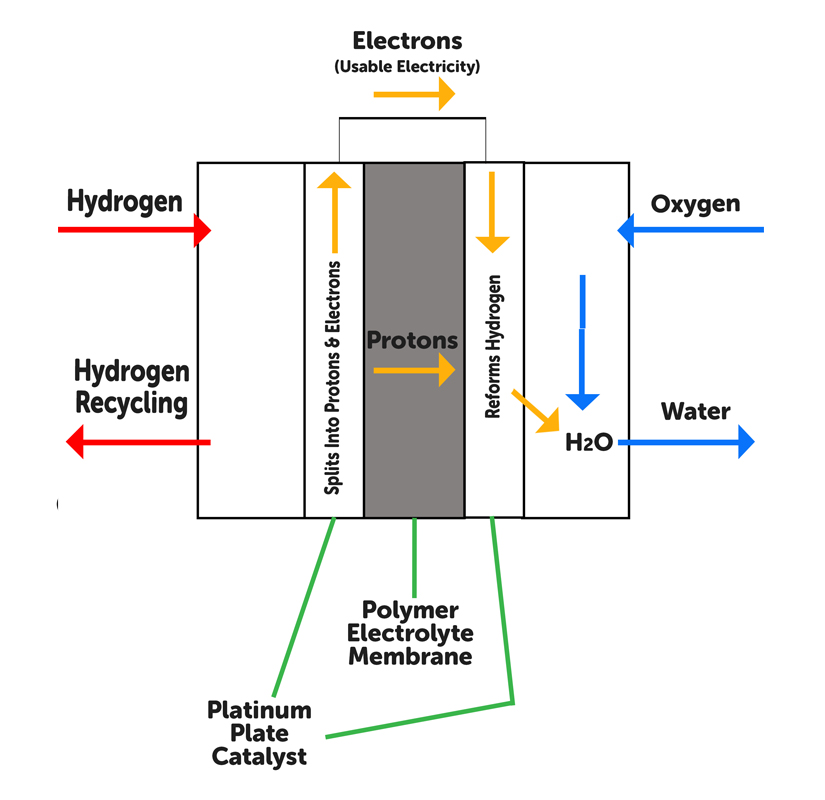Welcome to the Scrap Car Comparison guide to the Hydrogen Car. In this article we’ll go over the inner workings of a hydrogen car, dispel the confusion between hydrogen and water powered cars, and see how the hydrogen car just might help make the world a greener place.
What Is A Hydrogen Car?
The Hydrogen Car is a key component of the Hydrogen Economy; a system designed to deliver hydrogen powered energy to the masses. Originally proposed in the early seventies, the Hydrogen Economy seeks to lower the world’s carbon emissions and create an environmentally sustainable model for transport and industrial energy demands.
A Hydrogen Car is a vehicle that uses hydrogen fuel to generate energy through chemical reaction. Like electric cars, they rely on electric motors in place of conventional engines. But unlike electric cars instead of using rechargeable lithium-ion batteries, hydrogen cars run compressed gases through stacks of Hydrogen Fuel Cells.

Rather than filling up the car with petrol or diesel, you refuel the hydrogen tank. This means that they do not generate exhaust emissions and are classified as Zero-Emission Vehicles. In fact, the only byproduct is water, which can be disposed of by various means such as steaming or draining. Please note: This is only true for non-hybrid vehicles, as they do not use any form of fossil fuel as a power source. Unfortunately, the drawback that has slowed the Hydrogen Car’s development has been sourcing and transporting the hydrogen needed to run the vehicles. Despite being one of the most plentiful elements in the universe, hydrogen does not naturally occur in its gaseous form on earth. This means that it needs to be extracted from various other hydrogen containing sources available to us.
Are Hydrogen Cars Water Powered?
The short answer is No.
Water is in fact a highly stable mixture of hydrogen and oxygen. Water is relatively simple to break down into these parts, making it an easily accessible and reliable source of hydrogen. Sadly though, extracting the hydrogen from water is a fairly energy demanding task, consuming almost as much energy as it generates. This is the main issue that has hindered the development of on-board, 100% water powered energy.
Despite this fact, many people have claimed to have cracked water-powered cars’, with many generating media hype and legal action as a result. You can check out this link to get more details on previously debunked water-fuelled cars.
Hydrogen Fuel Cells
So, how do we use Hydrogen to power a Hydrogen Car? The most common answer is a Hydrogen Fuel Cell. Not to be confused with fuel, a fuel cell is a device used to chemically generate electricity. Here’s how it works:
In a typical Hydrogen Car you’ll find a Fuel Cell Engine, which is connected to a fuel storage container. The storage container creates a flow of compressed Hydrogen and Air to a stack of fuel cells within a Fuel Cell Module. Within this module the hydrogen is forced through a layer called a membrane. The membrane allows the hydrogen’s protons to pass through but not the electrons, which are then forced to travel around the membrane, creating a usable electric current. The electricity is then used to power the typical systems of an automotive engine, similar to that of an electric car.
After running through the circuit, the electrons are forced back into the fuel cell where they recombine with the protons to form hydrogen again. The hydrogen then joins up with the oxygen molecules in the compressed air to form water.
It’s important to note that the amount of fuel cells in a stack depend on the power requirements, with larger stacks generating more electricity.
We’ve created this diagram to demonstrate how a basic fuel cell works below:
(Please note: this diagram represents the PEM or Polymer Electrolyte Membrane fuel cell. This represents only one types of fuel cell available.)
Are Hydrogen Cars Clean Air Zone Compliant?
One of the biggest selling points for hydrogen fuel cell vehicles will be the lack of emissions coming out of the tail pipe. As Zero-emissions vehicles, hydrogen vehicles do comply with any and all clean air zone restrictions, including both the expanded ULEZ and the much stricter Zero Emission Zone as seen in Oxford city centre.
The Future Of The Hydrogen Car
So, is the Hydrogen Car the car of the future? It’s still hard to say. With the rising popularity of electric vehicles, as well as the further exploration into biofuels, the car fuel of the future is still yet to be decided upon. As is often the case in motoring, motorsport is playing a key role in the advancement of hydrogen technology. The World Endurance Championship, which includes the legendary 24 Hours of Le Mans, will accept hydrogen powered cars from 2026, so you can expect a sudden uptick in the development of hydrogen vehicles as teams scratch for the leg-up on the opposition. In the meantime, Hydrogen Cars and fuel cell production will continue to be developed to push us towards a carbon free economy. So watch this space!
If you’re interested in getting a Hydrogen Car today, there are currently only two mainstream hydrogen cars available on the UK market. The Toyota Mirai (pictured above) starts from £65,000, while a Hyundai Nexo (its predecessor, the ix35 is pictured below) will set you back at least £68,000. Despite this, there are many more car manufacturers committing to hydrogen technology in the coming years, with brands such as BMW, Land Rover, INEOS and Vauxhall all with hydrogen models on the horizon.
You can also click here to find current and planned UK hydrogen refueling stations.
If moving to hydrogen, or another ‘green’ power, is something you’re keen to do and want to get rid of your old gas-guzzler, then Scrap Car Comparison is here to make that as easy as possible for you. We’ll scour your local area to make sure you’re getting the very best price, and with 99% of postcodes covered, we’ll come and collect it from you for free. Simply tell us where you are and your registration number and we’ll have quotes for you in as little as 60 seconds.




